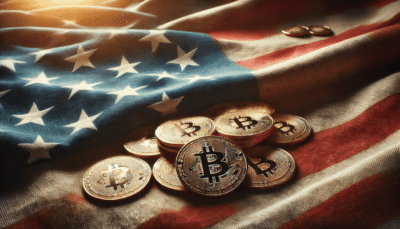Not all Bitcoin believers arrive by way of tech idealism or early crypto gains. For Peruvian Bull, the turning point was personal, visceral, and economic. A front-row seat to the 2008 financial crisis—watching his brother’s real estate business implode—sparked the beginning of a long intellectual excavation. What caused so much pain? Why did an entire system crumble with such force? These questions pushed a young Peruvian Bull to abandon biology for finance and macroeconomics, a decision that set the stage for one of crypto’s most insightful macro commentators today.
“I saw that impact on my parents as well,” he shared on his recent appearance on The CoinRock Show. The pain of the 2008 crash didn’t just rock Wall Street—it reverberated through homes like his, where financial security proved more fragile than anyone had imagined. That collapse seeded a long obsession with understanding money, markets, and monetary policy.
After college, he joined a fintech company as a valuations analyst, building financial models and working closely with startup data. But despite climbing the traditional ladder, he chose a different path.
“I quit and started doing macro full time,” he said.
“I’ve now been full time for almost two years now making macro content.”
With a growing presence on Substack, YouTube, and Twitter, Peruvian Bull is now one of the clearest voices unpacking the monetary mechanics most investors don’t see—let alone understand.
Seeing Through the QE Mirage
One of Peruvian Bull’s strongest insights centers on what he calls the “monetary event horizon” facing the United States. He believes the post-COVID liquidity splurge created a trap the Fed can’t escape:
“This decade, we’re going to have multiple waves of inflation just like the 1970s,” he warned.
And it’s not just about cyclical shocks—structural debt and fiscal excess are pushing the U.S. closer to an unavoidable fate: QE Forever.
When the Fed creates bank reserves, they’re not printing money like people think, according to Peruvian Bll. They’re swapping treasuries for settlement balances—money that can only be used inside the financial system. But while this cash doesn’t reach everyday consumers directly, it floods institutional portfolios, which means risk assets—especially crypto—get a tailwind.
“You track global liquidity and you’ll see: when liquidity spikes, Bitcoin rips.”
His claim is backed by sharp analysis. During the 2020–2021 liquidity boom, global liquidity rose 20%. Bitcoin? It climbed nearly 400%. And as the Fed tries to tighten with quantitative tightening (QT), he’s documented how they’re quietly offsetting those effects.
“Reverse repo drawdowns and the Treasury General Account (TGA) are just ways to inject stealth liquidity,” he said.
“It’s financial theater.”
The GameStop Red Pill
Despite all this, Peruvian Bull didn’t take crypto seriously until much later. His first Bitcoin buy was in 2017, but like many, he sold for a quick gain and moved on. “I thought I was a genius,” he laughed, recalling his small wins in Litecoin and Bitcoin during that bull market. But it wasn’t until 2021, during the GameStop saga, that he woke up to the rot inside legacy finance.
“They literally shut off the buy button. No one went to jail,” he said, still stunned.
“That event should’ve caused riots.”
The brazen manipulation by brokers and the lack of accountability cemented a new conviction: centralized finance was irreparably compromised. From there, he dove deep into Bitcoin, Ethereum, and Avalanche.
“By that summer, I was completely crypto piled, putting paychecks into crypto.”
What sets Peruvian Bull apart is his command of monetary systems and his clear articulation of the stakes. With U.S. interest payments now exceeding the defense budget, he sees a slow-motion reckoning. We’re already at wartime spending without a war, The result? The Fed will be forced to return to QE—and fast. Once that happens, inflation is coming back. Maybe even worse than last time. According to the quintessential Macro analyst.
But in that dysfunction, he sees the opportunity for crypto. If the U.S. builds a Strategic Crypto Reserve—as Trump once teased—it could mark a turning point in mainstream adoption.
“They might revalue gold, unlock $850 billion,” he speculated. I
“I think that’s potentially why the gold price is moving so aggressively higher right now.”
it’s not just macro theory. He’s following the money—and the metal.
On the Horizon: A New Bull Market
Asked for his price prediction, Peruvian Bull didn’t hesitate.
“I think $250K to $350K for Bitcoin this cycle is conservative,” he said.
He’s especially bullish on corporate treasury adoption, predicting more firms will follow MicroStrategy’s lead. “Especially if we get more and more Bitcoin treasury company adoption, especially from one of the big boys.”
Whether through careful analysis or raw intuition, his message remains clear: the system is stretched. The Fed can delay, but it cannot escape. And for those paying attention, that tension spells opportunity.
“Like we said, the spillover effects from liquidity will flow eventually out to the crypto markets.”





